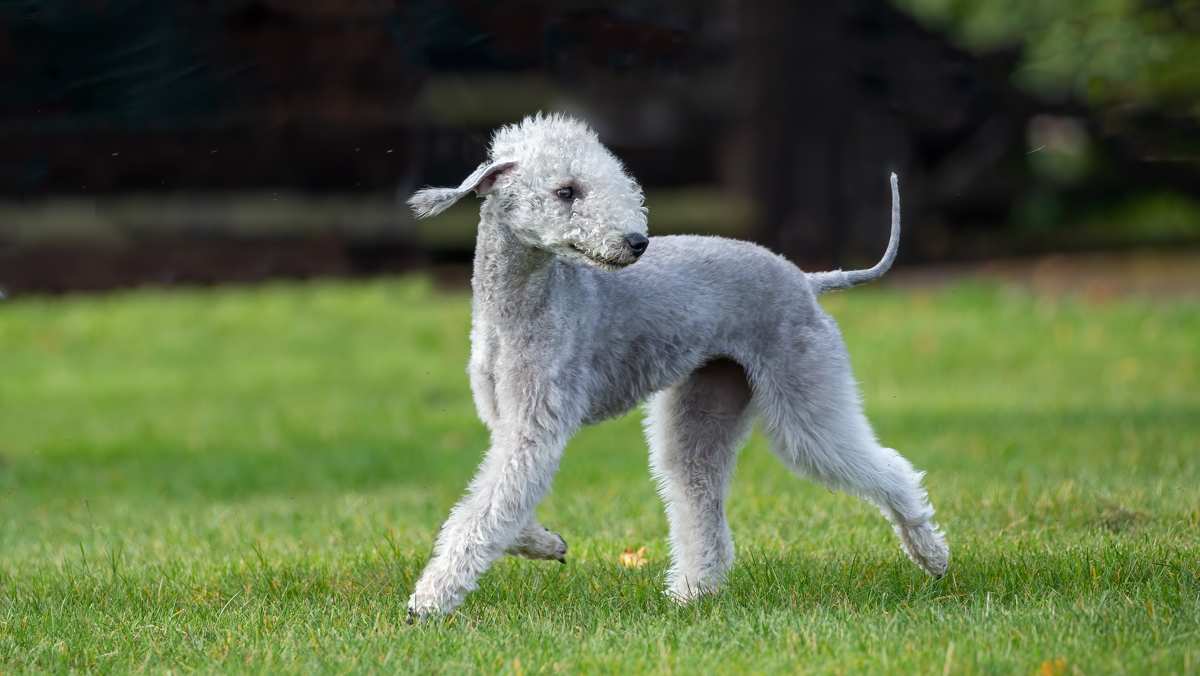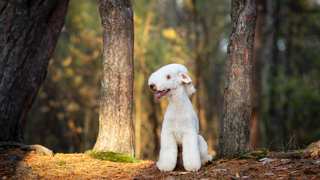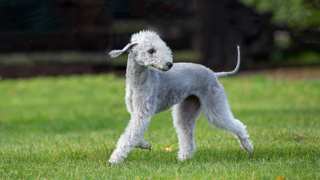The Bedlington Terrier, as its name suggests, is a member of the Terrier group of most clubs. These small but agile dogs were originally developed in England to hunt vermin, badgers, and other small animals, but they're not really used for hunting these days. Bedlingtons make good pets for active families, and they can excel in the show ring as well.
A few Bedlington Terrier facts: they're small-sized, averaging 16 inches at the shoulders in height and 20 pounds in weight; they have medium-length, crisp yet curly coats that give them a lamb-like appearance (and the coats don't shed much at all); and they have a good bit of energy and will need regular exercise.
Some advantages to owning this breed, along with a few Bedlington Terrier problems:
Affectionate and outgoing
Intelligent
Very healthy
Doesn't shed much
Adapts well to apartment living; will need frequent outdoor exercise
Good watchdog abilities
Suitable for first-time owners
Responds fairly well to training
Comfortable in both hot and cold climates
Can be stubborn and strong-willed
Very high prey drive; will instinctively chase small animals
High exercise needs
Early obedience training and socialization are musts
Frequent grooming necessary
Might be defensive or confrontational around unknown people and animals
Typical terrier habits of digging and chewing
Purebred
15 - 17 yrs.
15 - 17 in.
18 - 23 lbs
OverallFamily FriendlyChild FriendlyPet FriendlyStranger Friendly
Easy to GroomEnergy LevelExercise NeedsHealthShedding Amount
Barks / HowlsEasy to TrainGuard DogPlayfulnessWatch Dog
Apartment DogCan be AloneGood for Busy OwnersGood for New OwnersIntelligence





